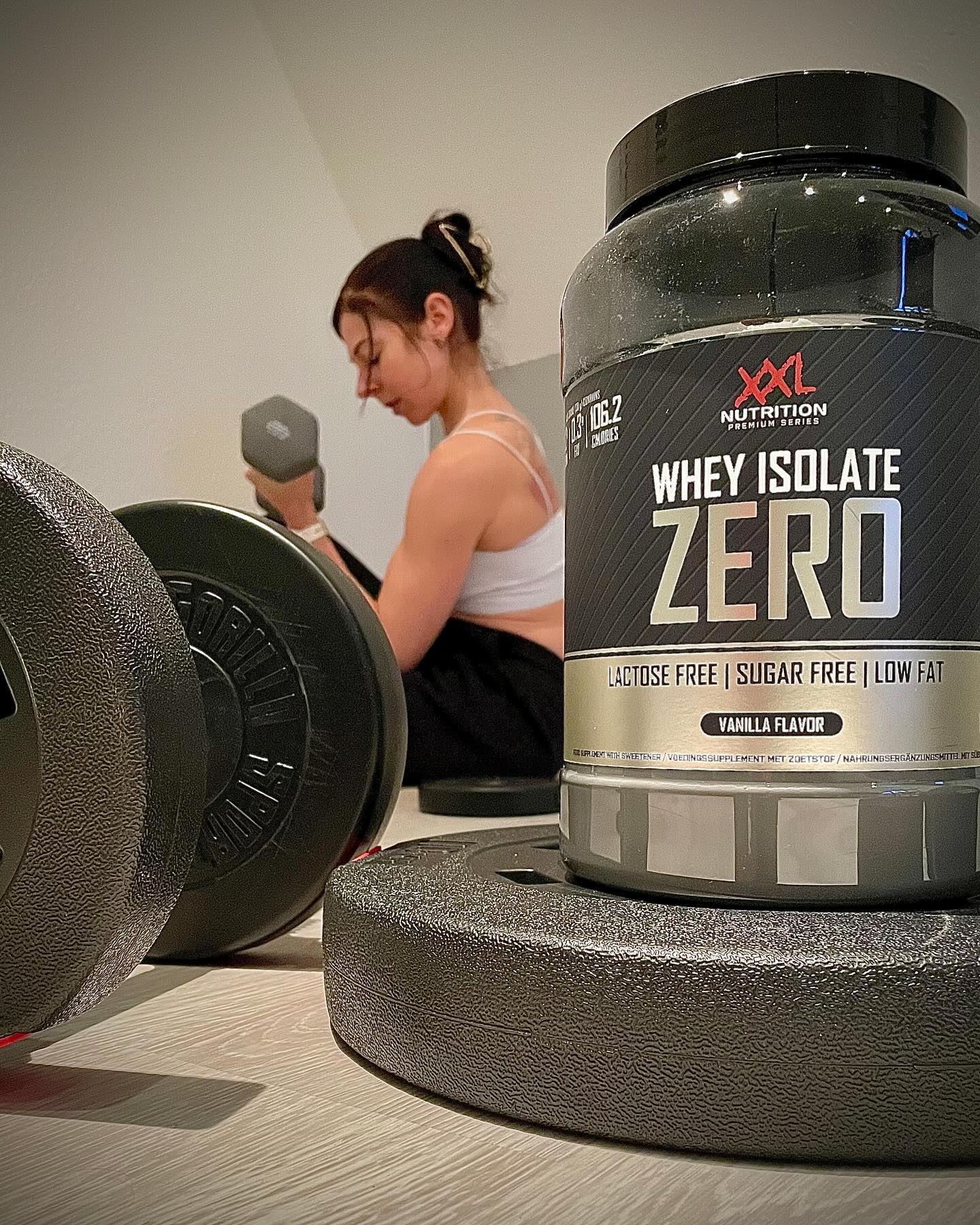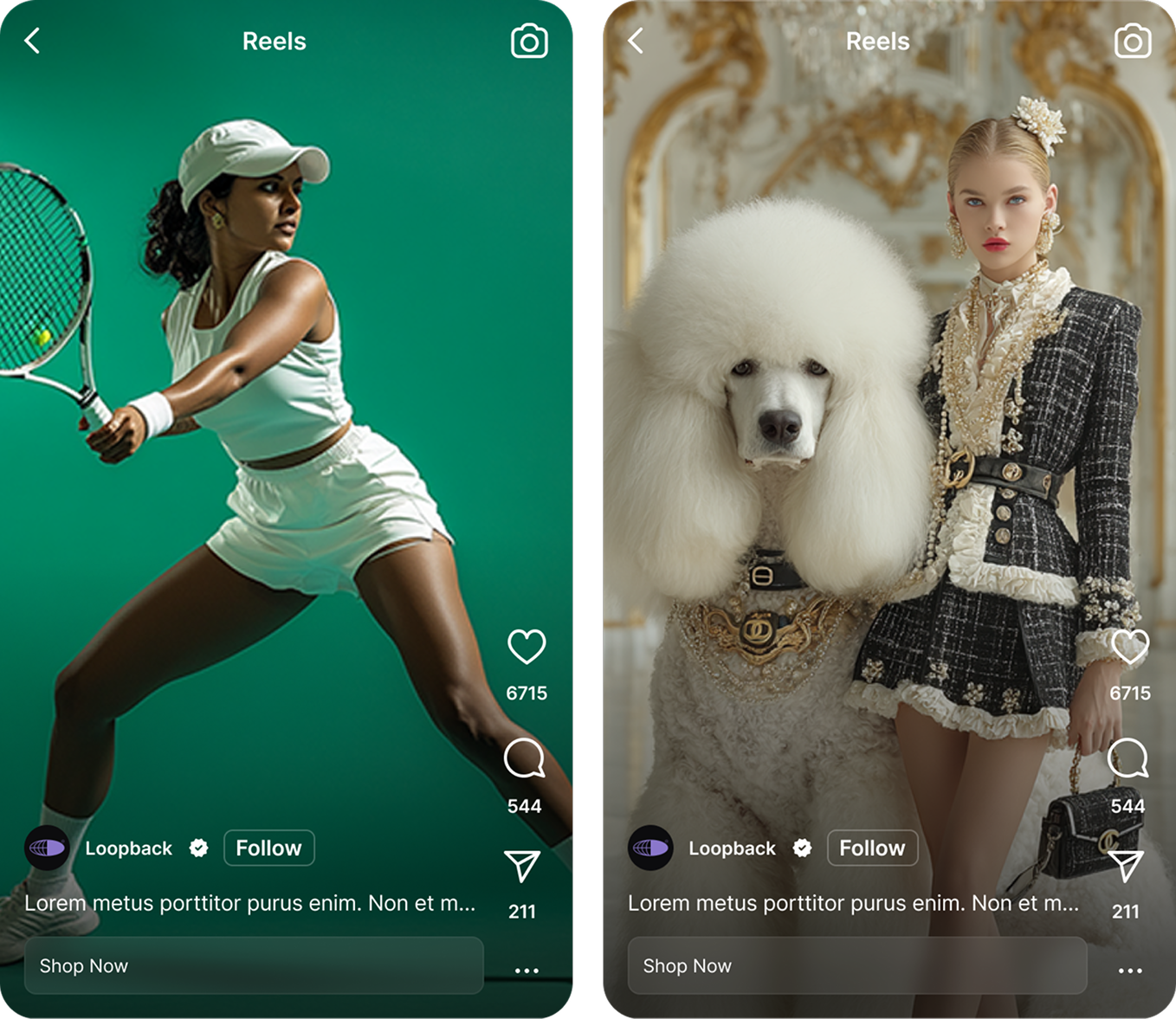Master 2025 Influencer Campaigns: Proven ROI Tactics

Why Most DTC Brands Are Still Losing Money on Influencer Marketing
Chasing vague top-funnel metrics is the fastest way to light your influencer budget on fire. Most DTC brands still celebrate follower counts, likes, and engagement rates while ignoring the only numbers that actually matter: attributable sales. “Brand awareness” is a comfort blanket for campaigns that failed to deliver real revenue. The harsh truth? Vanity metrics make impressive dashboards, but they do not pay the bills.
Equally troubling is how brands misallocate their content boost budgets. Most simply hit “promote” on creator posts without considering core performance levers: creative quality, audience fit, and message testing. The result is thousands wasted supercharging unoptimized, forgettable assets that stall in the feed. At The Cirqle, we see this every week: brands burning amplification dollars on creator content that would never pass a paid media sniff test. If you wouldn’t spend a dollar boosting it directly in platform ads, why spend $1,000 amplifying it from an influencer’s handle?
Outdated whitelisting practices and fragmented tracking further gut campaign viability. Brands still treat creator whitelisting as a static checkbox - missing the opportunity to rigorously optimize messaging, flighting, and creative iterations. Worse, many DTC teams rely on last-click attribution and inconsistent tracking pixels, causing massive leakage between influencer touchpoints and actual conversions. If you can’t tie spend to sales with precision, you’re running internal PR, not performance marketing.
Data is where brands leave the most money on the table. Very few teams rigorously analyze CPM, CAC, or ROAS in their influencer campaigns. Digital-first DTC leaders obsess over these metrics in paid social and display, but influencer remains the Wild West - opaque costs, soft metrics, and arbitrary post-campaign lift estimates. This lack of discipline practically guarantees negative ROI.
Here’s the real edge in 2025: leaders in The Cirqle’s creator performance era are tearing up the playbook. We drive precision with real attribution tech, structured performance contracts (not fee-for-service), and always-on iterative optimization against strict CAC and ROAS goals. The winners ensure every dollar in influencer goes through the same scrutiny (and delivers the same bottom line impact) as the rest of their media mix. Sticking to legacy approaches is budget suicide. If you aren’t demanding accountable performance and crystal-clear attribution from influencer, you’ve already lost the next campaign.
The Cirqle’s Creator Performance Framework: Move Beyond Impressions
The Cirqle’s Ads Creation with Influencers enables ecommerce marketers to launch paid partnership ads in seconds directly from the platform, streamlining permissions and creative approval while eliminating friction with creators. You get automated access controls and instant safe zone previews, so every campaign asset is fully compliant and ready to scale. To see the workflow in action, learn how it works.

If you’re still measuring influencer success with “likes” and “reach,” you’re operating from a playbook built for 2018. The Cirqle’s Creator Performance Framework exists to drive actual ROI, not just aesthetics or awareness. Here’s how to build campaigns that move revenue - not vanity metrics.
Start with ROI-driven objectives. Before a single creator is briefed, align every campaign to a business goal: conversions, incremental ROAS, new customer acquisition, or CAC. Most brands mistakenly treat influencer as an upper funnel awareness lever and hope for trickle-down results. Instead, structure every brief and creative execution to ladder up to hard outcomes. Decide in advance what counts as success and calibrate every variable (offer, channel, creator selection) against it.
Ditch surface-level creator selection. The market is still clogged with brands choosing creators on perceived “relevance” or follower count. The Cirqle flips this logic: pre-vet creators on their historical sales data, clickthroughs, and content-to-conversion rates, not just top-line reach or engagement. For example, a creator with half the audience but proven triple the historical ROAS is, objectively, a better bet.
Hardwire every activation for measurement. If you’re relying solely on self-reported creator “results,” you’re missing the forest for the trees. The Cirqle mandates pixel-based tracking and unique, shoppable links on every post, Reel, or Story. This closes the loop from content view to purchase - no ambiguity, no room for creative fuzziness. When you see a sale, you’ll know the exact moment, asset, and creator that drove it.
Only pay for outcomes. The age of fixed creator fees is over for performance marketers. Move to a hybrid or pure performance-based compensation model: meaningful base fee plus a bonus or commission per sale, lead, click, or install. Creators become profit partners with you, not just paid endorsements. This aligns incentives and automates quality control - creators who can’t convert, stop earning. High performers become your highest-earning marketing channel.
Integrate creators into paid media, not just organic slots. High-performing influencer assets deserve a seat in your performance media plan. The Cirqle’s brands routinely white-list creator content and scale it with paid ads - unlocking 3 to 5x ROAS improvements vs. standard UGC or static creative [insert benchmark here]. This approach ties influencer into full-funnel acquisition with precise measurement and CMO-level accountability, escaping the trap of isolated, siloed spends.
When you deploy The Cirqle’s Creator Performance Framework, you don’t “hope” influencer marketing works - you engineer it to deliver directly on bottom-line goals.
Build Data-Driven Creator Shortlists: The Must-Use Tech Stack
If you’re still choosing influencers based on vibe, follower count, or manual Instagram stalking, stop. The brands outpacing everyone in 2025 act like quant funds, not casting agents. Here’s how you build a creator shortlist that guarantees measurable impact - step by step, using the tech and data stack real growth leaders deploy.
Start with first-party performance data, not guesses. Pull historical sales or lead generation tied directly to each creator, using unique discount links, post-purchase surveys, or integrated attribution tools like Shopify Collabs or affiliate platforms directly connected to your site. If a creator claims “great engagement,” but your last campaign with them didn’t move product, move on. Nothing is more predictive of future performance than a track record of actual conversions for your brand or high-intent, adjacent categories.
Next, filter ruthlessly with cross-platform engagement rate benchmarks. Don’t just accept TikTok or Instagram engagement at face value - use standardized third-party tools like Modash or Traackr to compare each creator’s engagement rates against live channel and vertical averages. Top brands set a “qualification floor” here; for example, only shortlisting creators landing above a percentile cutoff that reflects where performance marketers see meaningful lift. Most CMOs fail here by overvaluing raw followers or not understanding that engagement norms swing wildly by niche and format.
Now, stitch CRM and ecommerce data right into your influencer selection workflow. Use API integrations (Klaviyo, Salesforce, or Shopify APIs) so you can tie lifetime value, repeat rate, and even segment-specific behaviors to creator-driven cohorts. This means you’re not just picking creators with one-off spike potential but aligning with those driving the highest value customer profiles over time. For the most sophisticated programs, plug creator UTM data into marketing mix models or incrementality tools for even deeper signal.
Here’s where performance discipline sets you apart: Reduce every creator to a projected CAC or ROAS, not just CPM or impressions. If your stack combines affiliate conversion data and site analytics, you can model expected CAC per creator based on past campaigns, typical deal cost, and revenue driven. Run this calculation up front, and remove anyone who won’t clear your threshold for profitable acquisition before they even see a brief.
Only after this evidence-based filter should you apply qualitative review: brand safety, creative style, and niche relevance. This is the reverse of the legacy process. When the creator shortlist is built on numbers, not bias, every dollar you invest pushes toward revenue, not vanity reach.
Top DTC and ecommerce growth leaders never rely on gut feel. They plug the right tech into their process and build creator shortlists like a performance pipeline, not a popularity contest. That’s how you win the Creator Performance Era.
Creative that Converts: Briefing for Performance, Not Aesthetics
Every underperforming influencer campaign traces back to the same mistake: briefs focused on how the content looks, not on what the content does for your bottom line. Aesthetics without strategy is just expensive wallpaper. Here’s how to brief influencers like a performance marketer, not a brand marketer.
The starting point is ruthless clarity: define the customer action you want, not just the brand story you want told. Whether you want prospects to click a link, claim an offer, or experience the product’s "aha moment," lock that down first. For example, instead of, "Showcase our new skincare line in a beautiful setting," the brief should say, "Demonstrate applying our skin serum, highlight before-after results, and challenge viewers to tap the promo link for a 20% discount." Make customer action non-negotiable.
Direct response tactics must be baked into every deliverable. Dial up your asks: strong calls-to-action (“Shop now,” “Try risk-free,” “Use code SAVE20”), product in use (not just placements), clear value messaging, and explicit mentions of offers or limited-time deals. If your offer isn’t the most memorable part of their script, you’re leaving cash on the table.
Mandate real-time creative testing as a deliverable, not an afterthought. Require each creator to submit at least two variant videos or posts: one leading with the offer up front, another leading with the product benefit or demo. This isn’t optional. Stagnant creative is performance purgatory.
Performance KPIs must be front and center in your instructions. Name your targets: “We are optimizing for cost-per-click below [insert benchmark here], cost-per-acquisition capped at [insert benchmark here], and conversion rate above [insert benchmark here]. Content that lags after 48 hours will be paused and iterated.”
Finally, enable rapid iteration by making pivots easy. Give creators the mandate (and permission) to revise quickly based on early data signals. If click-through is weak, copy and visuals change within days, not weeks. Share partial performance data live, set up rapid check-ins, and reward those who adapt fast.
Most brands overvalue “brand fit” and undervalue mechanics that drive sales. Set the rules of engagement on day one. Creativity is valuable only when it moves the needle.
Paid Amplification Mastery: Scaling the Winning Creator Assets
Most brands waste paid spend by promoting mediocre creator assets based on intuition, not data. Here’s the winning workflow: let the live influencer campaign performance dictate which posts get turned into paid ads. First, treat organic creator content as a real-time testing ground. Use platform-level signals (thumbstop rates, share rates, conversion events) to surface top outliers. The goal is not to “spread the spend” but to double down on content that not only engages, but converts.
Before you spend a cent amplifying, re-engineer the asset for platform-native direct response. Adapt captions for urgency, deploy native CTA formats, and ruthlessly crop or re-edit videos to match current algorithmic preference (think vertical, punchy, value front-loaded). Average creative gets average results; winning creators and their content deserve direct response-grade polish before any budget lands behind them.
Shortcuts kill ROI when it comes to incrementality. Every boosted creator flight (no exceptions) must be incrementality tested. Set holdout groups or run geo splits. Ask: does this amplification drive real, net-new results compared to the baseline? Never accept blended ROAS or “lift” slides that mask cannibalization.
Map each paid creator asset to a precise funnel stage: cold prospecting should use broad-appeal, scroll-stopping creative optimized for watch-through, not hard CTAs. Retargeting needs problem-aware, testimonial-rich content. For retention, surface loyalty-driven assets and post-purchase upsells. Relevancy by funnel stage isn’t optional if you want to beat average ad fatigue rates.
Most teams wrongly set and forget campaigns after launch. Instead, build an iterative, asset-centric refresh process: continually loop back to the latest organic performance, not last quarter’s winners. Refresh your paid roster weekly or even daily based on real-time data, championing top-performing creators over the generic “best post.” This forces creative Darwinism - only the best assets survive paid exposure.
Mastering paid amplification means combining surgical selection, ruthless optimization, tight incrementality discipline, funnel-literate mapping, and always-on creative refresh. Anything less is leaving scale and ROI on the table.
Ruthless Measurement: Architecting Full-Funnel ROI Attribution
Case in point. XXL Nutrition, the market leader in sports nutrition across the Netherlands and Belgium, set its sights on Germany. Rather than gambling on reach and guesswork, they partnered with The Cirqle to transform influencer marketing into a proven growth engine. By systematizing every creator touchpoint through The Cirqle’s scalable platform, XXL Nutrition cut guesswork, slashed time spent on manual influencer discovery, and unlocked performance tracking essential for market entry. The result: German expansion built on verified creator success, not marketing theory.

Case in point. Opatra faced the familiar headache of messy negotiations and variable creator output - classic inefficiencies that quietly bleed budgets. The Cirqle flipped the playbook: direct rate negotiation tools cut waste by over £13,000, a margin most marketers dream of reclaiming. With formalized data guiding every creator choice, Opatra maintained strict quality control and cut out guesswork. The platform’s unified workflow removed the drag of manual coordination, powering lean execution at scale. Every action reinforced one principle: ruthless operational efficiency drives ROI, not hunches or legacy process.

“Influencer marketing is a black box” is an excuse, not a reality - for the top 1% of brands. The Cirqle clients treat every influencer dollar as a performance investment, not a guess. The architecture starts with precision: assign unique tracked links and event-based pixels to each creator and activation. This is mandatory, not optional. Every click, add-to-cart, and purchase must scream “who drove this?” Ignore “reach” if you can’t directly tie creators to downstream conversion events.
Level up by tying all influencer-driven data back to your CRM and LTV records. Most brands stop at last-click revenue attribution. Smart growth leads track which creators are filling the funnel with high-value, repeat customers, not just first-time buyers. Use dynamic UTM parameters on creator links and custom conversion events. Pipe every influencer-converted user into your customer database, tagging them at source. Now, every future purchase, referral, and subscription can be traced back to the originating creator. Your LTV projections get sharper, campaign ROAS is finally honest, and you can pinpoint creators who build enduring value.
Never look at influencer CAC in a vacuum. Your dashboard must contrast creator-by-creator cost of acquisition against your blended paid media CAC. Brutally cut spend from creators whose CAC consistently drifts above the mean or can’t compete with paid social. Bonus: make this real-time, not QBR hindsight. If your dashboard can’t segment CAC, LTV, and payback by creator, campaign, and audience segment, your measurement system is broken.
Validation separates performance brands from blind spenders. Always run holdout or geo-lift tests. Withhold influencer campaigns in specific geos or time periods, then benchmark lift against your control group. This surfaces incremental sales driven solely by creator activity. Most brands skip this, preferring convenient attribution models - yet hard proof builds real confidence and funding.
Cut through subjectivity: make all creator optimization decisions using direct revenue and profitability, not gut feel or vanity metrics. Every brief, activation, and contract renewal should hinge on quantified ROI. If a creator’s performance can’t be proven end-to-end, they’re a risk - no matter aesthetic, audience size, or “brand fit”.
Systematize, integrate, and enforce these principles at every layer of your measurement stack. “Good enough” tracking is a death sentence for marketing efficiency. Ruthless measurement isn’t just survival in the Creator Performance Era - it’s your competitive moat.
What 2025’s Top Performers Do Differently: Contrarian Power Moves
Brands stuck in 2022 playbooks are missing the tectonic shift: outcome-based deals are now the price of entry with A-list creators. The best DTC brands ditch the outdated pay-for-post rot and only shell out for performance delivered. Want creators to put real creative skin in the game? Tie comp to CPA, revenue share, or post-conversion milestones - and don’t flinch about exclusivity if you’re moving significant volume. Top creators know their content is a distribution channel, not just content placement.
Market saturation isn’t a slow build anymore; it’s orchestrated blitzkrieg. Forward-thinking brands launch coordinated waves with dozens (sometimes hundreds) of micro-influencers executing on a single day or week. These blitzes swamp niche audiences and hijack algorithmic preference for hyper-relevant signals, resulting in a rapid surging of share-of-voice. The result: brand recall that actually sticks and performance that one-offs can’t touch. It’s a departure from the “test-and-hope” drip strategy most brands still defend.
Another blind spot: manual, piecemeal ad amplification. The true leaders automate whitelisting, granting creators platform-level paid access to turn high-performing organic plays instantly into paid powerhouses, no bottlenecks. The key is smart system hooks into your paid team - when a creator’s post is tracking above-benchmark, automate the spend and creative refresh. That’s real time, not campaign-next-month.
Most brands treat creators as a black box: post goes live, hope for the best. Top performers flip that script. They give creators radical transparency with detailed, objective performance feedback - right down to swipe-up rates and micro-conversion triggers. This enables agile creative iteration, compounding learning across a single campaign flight, not quarter by quarter.
Stop measuring against your last campaign’s best day. The truly ambitious refuse to normalize mediocrity. Instead, they pit every campaign against verified category leaders - pulling direct comparison data, not just year-over-year curves. If you’re not matching insert benchmark here, you’re leaving searchable growth on the table.
The next step is blunt: institutionalize these moves. Codify outcome-based contracts, build automated access, and abandon your old pace. Empower creators with feedback loops and stop competing against your own ceiling. That’s how you’ll move from content buyer to market dominator in 2025.
Get started with The Cirqle today.
Give your team the power and speed they need to find the right partners and grow your brand.
%201.avif)






